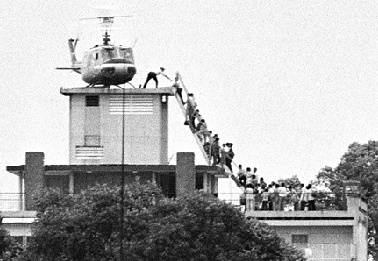 |
| US Forces Leaving Iraq in 2011 |
Time to Reevaluate
As of 2014, there has been no government-wide effort to synthesize lessons at the strategy and policy level from the past 13 years. An initial study of the lessons from the first decade of war (2001–2011) was produced in June 2012 at the behest of the chairman of the Joint Chiefs of Staff. That study, Decade of War,[1] provided a starting point for this RAND Arroyo Center effort, which incorporates insights from military and civilian agencies alike. This study distills seven lessons from the recent conflicts and offers seven recommendations to improve the making and implementation of national security strategy.
The RAND team reviewed documents; conducted interviews; and convened a workshop in which former officials and experts in national security, civil-military relations, and strategy discussed their research, insights, and experiences. The team used a two-stage Delphi poll to determine the areas of agreement among the workshop participants. The results were then applied to the expected future operating environment to identify critical requirements for civilian personnel, conventional forces, and SOF.
Lessons
-
The making of national security strategy has suffered from a lack of understanding and application of strategic art.
- An integrated civilian-military process is a necessary, but
not sufficient, condition of formulating an effective national security
strategy.
- Because military operations take place in a political environment, military campaigns must be based on a political strategy.
- Technology cannot substitute for sociocultural, political, and historical knowledge.
- Interventions should not be conducted without a plan to
conduct stability operations, capacity-building, transition, and, if
necessary, counterinsurgency.
- Shaping, influence, and unconventional operations may be
cost-effective ways of addressing conflict that obviate the need for
larger, costlier interventions.
- The joint force requires multinational and nonmilitary
partners, as well as structures for coordinated implementation among
agencies, allies, and international organizations.
Recommendations
- Integrate and educate -Enhance U.S. strategic competence by adopting an integrated
civilian-military planning process and improving the strategic education
of both the U.S. military and civilian policymakers.
- Build tailored organizations -Examine ways for the U.S. military to build effective,
tailored organizations that are smaller than brigades yet are equipped
with all the needed enablers to respond to a range of contingencies.
- Expand interoperability -Expand the ability of SOF and conventional forces to operate
together seamlessly in an environment of irregular and hybrid threats.
- Adjust personnel incentives -Create systemic incentives to reward personnel for creativity, risk-taking, and acquisition of multiple specialties.
- Refine special skills- Preserve and refine joint and service regional expertise,
advisory capabilities, and other special skills for irregular warfare
and stability operations.
- Leverage civilian expertise - Retain civilian expertise as essential for placing due emphasis on the political dimension of war.
- Deepen partnerships -Improve the preparation of U.S. personnel to serve in coalitions and to employ non-U.S. expertise.
Conclusion
A deliberate effort should be
undertaken to remedy the deficits in the "American way of war," to
improve the ability of U.S. personnel to integrate the political
dimension of war into military strategy, and to explore new combinations
of SOF and conventional forces to meet the security challenges of the
future. The executive branch and the U.S. Congress could also consider
educational and policy reforms designed to raise civilian competence and
capability in national security strategy, the benefits of which would
more than compensate for the relatively modest costs.
- [1] Joint and Coalition Operational Analysis (JCOA), Decade of War, Vol. 1: Enduring Lessons from the Past Decade of Operations, June 15, 2012. That analysis relied on 46 studies conducted by the JCOA and a working group convened by the Joint Chiefs of Staff.
 |
| Scene from the Fall of Saigon |
- The Art of War translation - Sonshi - Sun Tzu's Art of War for the Modern World
- On War, by General Carl von Clausewitz
- The Best and the Brightest - Wikipedia, the free encyclopedia
- The Prince, by Nicolo Machiavelli
- On Guerrilla Warfare - Kindle edition by Mao Tse-tung. Politics & Social Sciences Kindle eBooks @ Amazon.com.
- The Generals: American Military Command from World War II to Today: Thomas E. Ricks: 9780143124092: Amazon.com: Books
- American Grand Strategy After 9/11: An Assessment - PUB603.pdf
- Homeland Security Affairs: Article - Why Strategy Matters in the War on Terror
- Iraq: Learning the Lessons of Vietnam | Foreign Affairs
- Military Study Criticizes Direction of U.S. National Security Policy - Blog
xxxxx
No comments:
Post a Comment